Hondarribia is thrown flowers in winter, when visited with a tail, without queuing to eat a fish soup or without tightening to climb to the Sanctuary of Guadalupe. With leaving the Cantabrian and separated from France by the Bidasoa River, the location of this Guipuzcoan city of 16,934 inhabitants explains the history. Aseed by the French troops of Louis XIII in 1638, merchant and corsair, mestizo town (where Jews expelled from Castilla and Gascones were settled), whale hunter until they are exhausted, sailor – with a fishing fleet that is maintained by the anchovy and beautiful -, Monumental. His late -style church looks like a cathedral, the Baroque Palacio Zuloaga shines when the sun rises after raining and the fortification of Carlos V, located in the highest part, houses the hostel; A sandstone -resistant sandstone cubicle, from where the French Hendaya is seen and the rowers in the traineras (today athletes, formerly whales) navigate to the sea. From where everything is understood.
Inside the hostel
Anterior
Following
French neighbors arrive in Hondarribia now in another plan. They are in love with the Basque Country, says Manuel Quintanar, the director of the hostel. “They are some of our most important customers,” he says. For the Spaniards it is also attractive to the boat that crosses the Bidasoa to Hendaya in seven minutes (2.5 euros) or moving the car and visiting biarritz, which is more aristocratic, describes in a brush 32 years of experience; Or San Juan de Luz, “Basque,” adds in the Carlos V cafeteria, open to the entire public. “We have a strategic position,” summarizes the director. That said, the one who does not want to move from this port and walled city has quality entertainment.
Activities for all in a natural environment
Cultural visits, sustainable tourism, dynamization of the area …
How to get the most out of the area where the Hondarribia hostel is located
The Arma Plaza Foundation organizes cultural activities in autumn and winter for a decade. One of the guides of the heritage visits and the exits through the surroundings of Hondarribia is the historian Ramón Barea, a technician in this very active municipal entity, which makes the neighbors participate. They say that it lengthens life and mixing with people, turning off the TV for a while.
“Friday we have an appointment.” I will be in the front row.
A regular retiree to the conferences guarantees Barea his assistance while lunch an omelet ske The usual and those outside to eat and drink. “This cultural program we have called Discover your city (Know your city) encourages the sense of belonging to Hondarribia, ”says Barea. “Sometimes the place is the one who least knows the history of her city,” adds this expert in contemporary history of a “war of war” delivered to a family in Belgium after the beginning of the civil war. “Those who are visiting can also sign up. It is for everyone, ”confirms Barea.
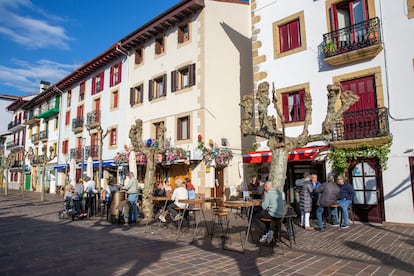
On March 7, a conference is held around Máximo Sagarzazu, a farmer who drew maps of Hondarribia and appointed Calas, Montes, hamlets, as he remembered when he was young, a century ago. At the headquarters that has a place in front of the hostel an exhibition will be open from March 8 to 30, 2025 with six of these original maps and notebooks with anecdotes related to the people of the place.
The previous activity, also free, was a visit to the Cala de Xixurko, where the old port that operated in the 16th century was located, place of landing of smuggles. At that time whales were still hunted. Your oil was fuel to light; With the bones, of great ones that were, they became furniture; and the front beards was raw material for the preparation of Corsés. The flesh did not like it, it was sold. “The piracy was born when the whales began to miss, in the seventeenth,” says Barea. It was an activity at the service of the king.
It is about to begin, on March 1, another work that also brings the richness of the sea: the anchovy campaign (El Boquerón) and the Verdel (the mackerel). Amarhed there are still about 20 freshly painted ships. The networks, some 400 meters long, are almost ready thanks to the work carried out these days, which remind them by hand.
José Javier, Elena and Miguel recommend
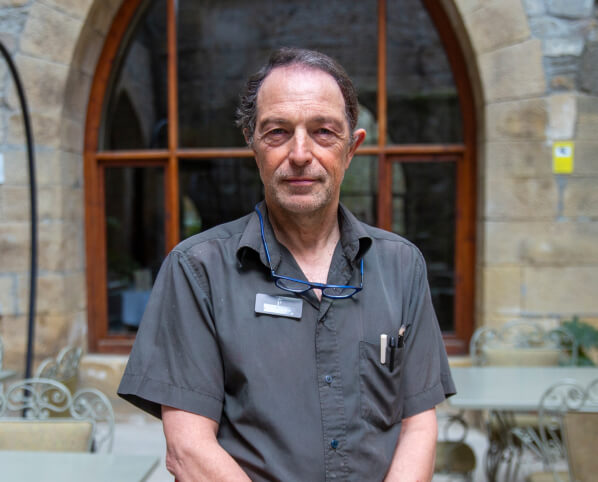
From the hostel you can make a walking route that takes you bordering your coast to Cabo de Higuer, and then going on Mount Jaizkibel in the direction of the Sanctuary of Guadalupe and from there return to Hondarribia. They are about 12 kilometers, it takes just over two hours.
José Javier Oña
Maintenance Head 39 years in Paradores
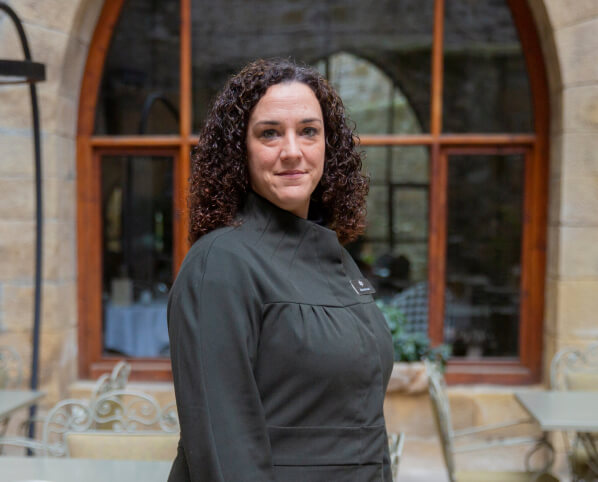
From Hondarribia everyone pulls for France or for San Sebastián. I recommend passages from San Juan, a small town that has a very pleasant walk to the mouth of the port. You can also visit the Faro de la Plata. 20 kilometers from the hostel.
Elena Gómez
Receptionist 20 years in Paradores
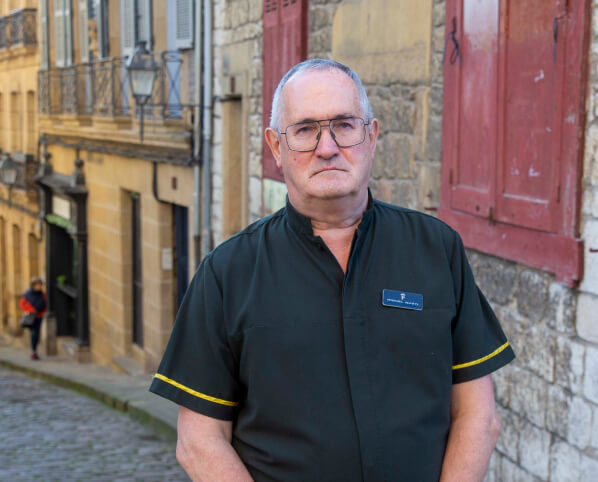
The Haya Peñas Natural Park, located 20 kilometers from Hondarribia, has many signaling hiking routes. It is a very green area, with streams, a reservoir. You can go by bicycle too. There is a mining exploitation of the Roman times.
Miguel Isasti
Waiter 32 years in Paradores
“All the pretty one that fish, from June to October, stays in Gipuzkoa,” says Barea, who enjoys talking about food. “What does fish soup carry? A lot of work, ”jokes this amateur chef, which belongs to a gastronomic society in Orio, where he lives, a fishing village also visited in this coast. “The hake is very elegant, but a good rodaballo… is the fish of the three flavors: the white part below with which it tracks the funds and absorbs minerals; The one above, dark, exposed to the sun, and the central area, ”he describes while heading for a scope of a confectionery in the navy. “The pantxineta It is a very delicate milhojas, with almonds and an avinillated cream. It makes you levitate, ”he says.
It has no restaurant El Parador, the only one on the network. Yes, it has breakfast buffet, where they serve metallic coffee jug diner American. And it does have a cafeteria, where they serve sandwiches and rations at all hours, and it is filled. In the end you are in a castle with tapestries of the seventeenth century, between walls of two to three meters, with a terrace that gives to the mouth of the river. It is nice to chop something already at the hotel after all day. Paradores client likes to be in the hostel. They are hotels to be: it is at home.
Beach or mountain
Quintanar, the director, points out how close San Sebastián (18 kilometers), a classic exit. There are more unpredictable. “There are those who stay in Hondarribia and visit the Baztán Valley, in Navarra, or reach Bilbao (120 kilometers),” he says. Nothing happens if someone does not drive, if you prefer to do everything on foot. The San Sebastián airport – thus called for being the capital, the city with more name – is actually in Hondarribia, attached to Bidasoa, in the same urban nucleus. He is funny to get off the plane and walk to the hostel in 10 minutes. It must be similar to having an island and arriving in your jet.
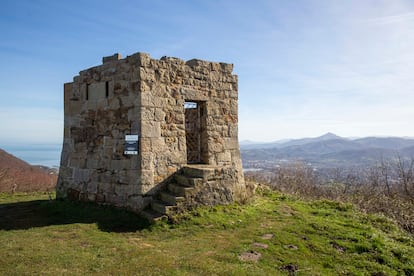
On foot there is also the Sanctuary of Guadalupe, at a fair hour, in climb. The veneration of the Virgin is free. The inhabitants of Hondarribia give their patron saint as much importance as the castle of Carlos V in the defense of the city in 1638, when the French troops launched 15,000 projectiles, recalls Barea, historian. “For several centuries we have not had periods of more than 25 years in peace,” he says. The hermitage is located on Mount Jaizkibel, where tories were also built and in which there is a viewpoint to the mouth of Bidasoa, to the border with France. A coastal mount of 543 meters of altitude, with cliffs, a hiking classic in Gipuzkoa, another place as the hostel from which to understand the story.
Basque Country, in 2 hostels
Credits:
Drafting and script: Mariano godson
Editorial Coordination: Francis Pachá
Photograph: Javier Hernández Juantegui
Development: Rodolfo Eyes
Design: Juan Sánchez
Design Coordination: Adolfo Domenech





